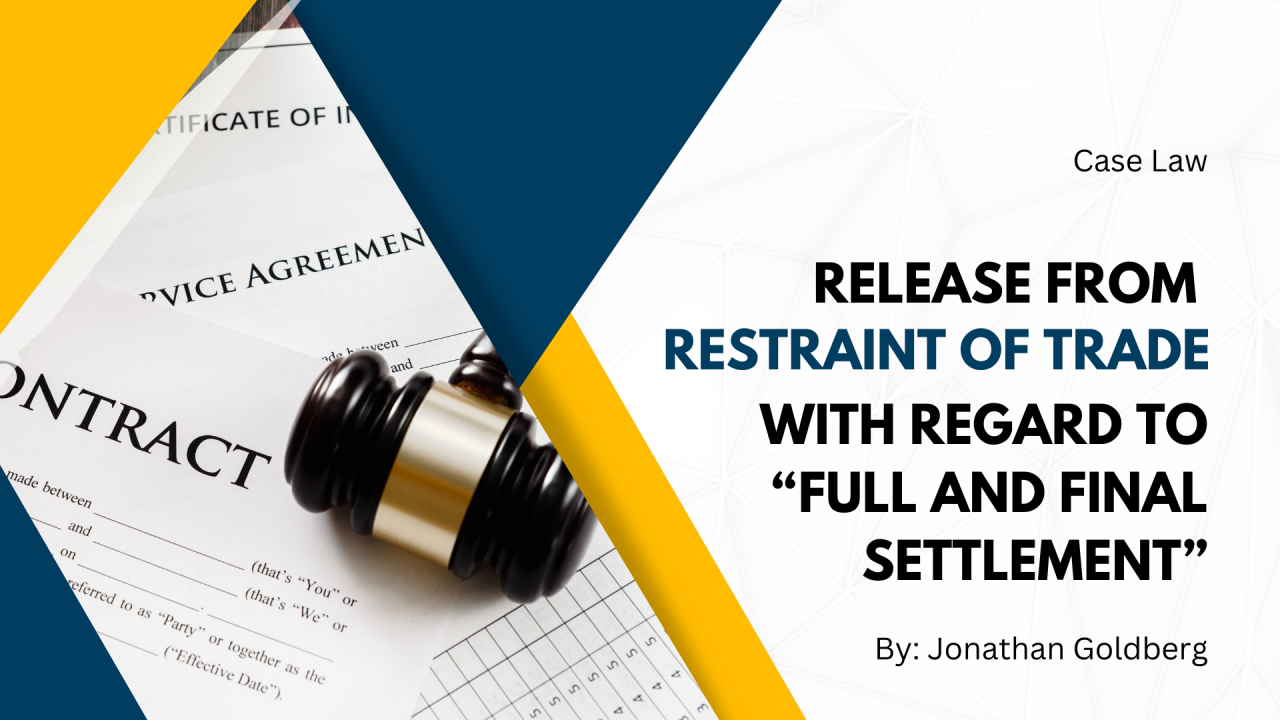

published by Jonathan Goldberg
In the case of WHEELWRIGHT V CP DE LEEUW JOHANNESBURG (PTY) LTD (JA 81/2022) [2023] ZALAC 6; (2023) 44 ILJ 767 (LAC); [2023] 5 BLLR 393 (LAC) (21 FEBRUARY 2023)
In 2007, the employee was employed as a Quantity Surveyor. In September 2010, after the employee was promoted to the position of Associate Quantity Surveyor, the parties concluded a restraint of trade agreement restraining the employee from, amongst other provisions, embarking on any business with the employer's clients.
In 2015, the employee became a Director and ultimately became a 20% shareholder of the employer.
In April 2020, due to the COVID-19 pandemic, the employer reduced the salaries of staff members including the Directors. On 30 April 2020, the employee indicated that he did not accept the reduction in his salary as it was in breach of his contract and proposed that he be retrenched.
On 3 May 2020, the employer and the employee agreed in principle that the employee would be retrenched, and his employment was to terminate on 30 June 2020.
The employee referred a dispute to the CCMA, claiming that he had been unfairly dismissed and the severance pay he alleged was due to him.
Before arbitration commenced, the parties concluded a settlement agreement prepared by the Commissioner which recorded that the employee would withdraw the claim and the employer would pay the balance of the severance pay "in full and final settlement of all and any claims which the parties may have against each other…”.
In 2015, the employee was appointed as a Quantity Surveyor for a major project in Nigeria, which had already been awarded to the employer. Satisfied with the employee's assurance that the settlement agreement concluded in the CCMA had released him from the restraint clause, the contractor of the Nigerian project appointed him as a Quantity Surveyor.
The employer sought to enforce the restraint clause by applying to the Labour Court (LC). The LC held that the settlement agreement had not extinguished the restraint and that the employee had breached it.
The employee appealed the decision of the LC before the Labour Appeal Court (LAC).
The employer argued that the agreement had resolved only the unfair dismissal dispute and the amount of severance pay.
The LAC held that the CCMA agreement extended beyond the issue referred to the CCMA and that the settlement agreement could not be confined to these issues.
When the agreement was signed the employer knew that the employee would not adhere to the restraint agreement. Had the employer intended to broaden the reach of the settlement agreement, it should have expanded the exclusion so that the restraint would continue to operate.
The LAC found that the LC had erred by finding that the settlement clause did not cover a dispute that might arise out of the restraint agreement.
The appeal was upheld with costs.





